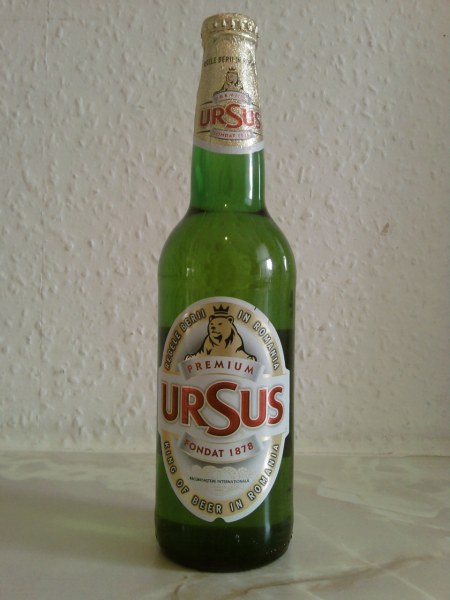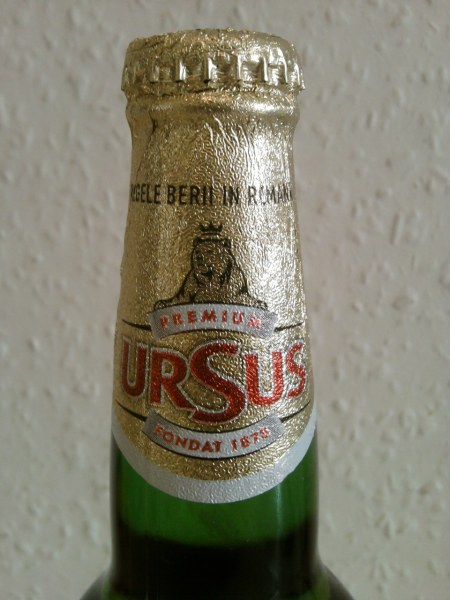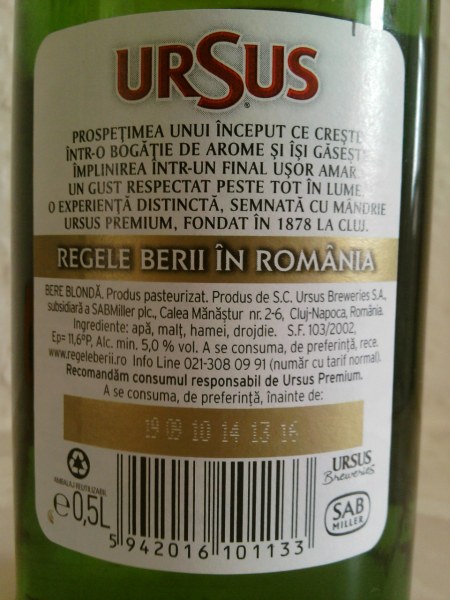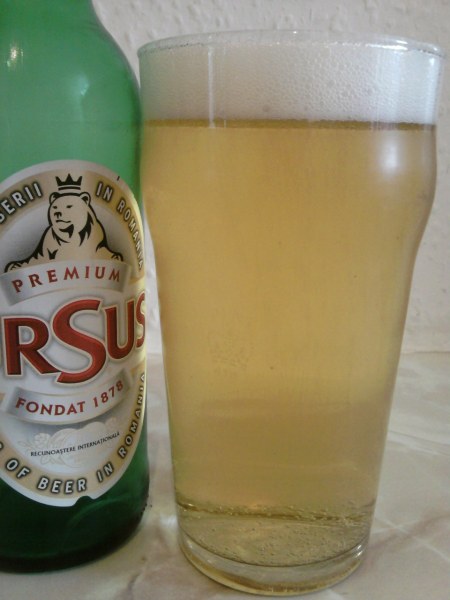IN late 2010, a new category of lager started appearing in London. Sandwiched between the Premium Lagers and the Super Strength Lagers, the Very Strong category sought a new sweet spot. At around eight and a half percent alcoholic volume, could you enjoy the potency of a Super with the drinkability of a Premium? Here’s what I discovered.
If you like playing along at home, you’ll be wondering which products I’m describing. They are:
Kolson Super 8.6% by Royal Unibrew from Poland. I bought this one from a convenience store on Old Street in Shoreditch, east London.
Oranjeboom Imported Strong Beer 8.5% by, Oranjeboom from the Netherlands. I bought this one from a convenience store on Bethnal Green Road, east London.
Good luck finding them. They both disappeared from shop shelves a matter of months after appearing, thus rendering this review useless. Nevertheless, I shall press on by telling you that of the two, Oranjeboom Imported Strong Beer was the best. That’s why the rest of this post is about Oranjeboom Imported Strong Beer and not it’s slightly stronger and less pleasant rival.
What can I say about the can? Well, it’s not as cool as the Kolson Super. The Kolson can is minimalist and elegant. The Oranjeboom effort looks like the designer couldn’t stop designing.
On the plus side, everything you need to know about it is right there in front of you. The strength, where it’s from and who manufactured it. The Oranjeboom logo is there, featuring an orange tree. Of course. Well it is from the Netherlands. And there’s the date that, presumably, the Oranjeboom brewery dates back to. 1671 was a very long time ago, even by continental beer standards.
Incidentally, I spent two minutes researching Oranjeboom Imported Strong Beer, by which I mean I used Google. They do have a UK website at http://oranjeboomlager.co.uk/ which is very interesting. Apart from the lack of explanation for the orange tree logo, and the mention of this particular Strong Beer. It’s almost as if they’re doing a Carlsberg and are embarrassed by it.
If you’re the sort of person who likes to know how their sausages are made, you can discover a few more facts about this beer. They describe it as being an “Original Dutch Recipe” that includes “Pure Natural: Choice Hops, Finest Malts and Grains, Clear Water”. Notice the absence of syrup. Carlsberg Special Brew this is not. On one of the sides crammed with multilingual text, there is an official ingredients list. Astoundingly, this is less informative than the list on the front I quoted from.
Let’s see if the other side of the can is any less useful.
Nope, just a barcode and another impenetrable block of multilingual text. Nothing to see here. So there we have it. A can covered in text that only conveys the basic details. Now there’s no excuse for not pouring it into a glass, and trying to write words to describe it to you. This is why you can now see a photograph of this can, poured into a mismatched pint glass.
Pouring was a doddle. There was very little head, and what little there was, quickly dissipated. Right now, there’s a thing, white, patchy layer of foam. The lager colour is gold, and is bubby with carbonation.
What does Oranjeboom Imported Strong Beer smell of? This is easier to describe if you’ve already smelt the generic malted barley of premium lager and the strong whiff of a super strength. That’s because Oranjeboom Imported Strong Beer smells part way between the two. Not as off-putting as the 9% super-strengths, but getting there. Honestly, the smell lets it down. It’s too close to super smell for my liking.
What does Oranjeboom Imported Strong Beer taste like? Coming straight from the fridge, the first gulp isn’t bad. Much better than the smell would suggest it is. The second gulp confirms it. At fridge cold temperature, Oranjeboom Strong tastes more like a normal, everyday premium lager, and only marginally like a super-strength monster. From the third, pleasantly painless gulp, I can start to make sense of the taste. First, as you’d expect from most lagers, there’s no flavour to speak of. Normal lagers give you a mild, bitter aftertaste. Supers give you an overpowering, synthetic aftertaste. Oranjeboom Strong gives you, guess what? Something half-way between the two. What you feel is a moderate bitterness, followed by a moderate wave of strong, thick super-style aftertaste. Not overpowering, mind you. Just a moderate wave of that sensation that, surprisingly, does not linger.
What do I like about Oranjeboom Imported Strong Beer? As you can probably tell, I’m impressed by the combination of strength and drinkability. As long as you don’t breath in while sipping or gulping it down, you could convince yourself you’re drinking a regular premium lager. The short-lasting aftertaste even gives it a hint of refreshment. At least while cold. Also likeable is that it’s not over carbonated, so you don’t suddenly start burping. Another big plus is how well it warms up. Even at near room temperature, it is sill drinkable. Other lagers would have given up and become revolting by this point. From the outside, it looks like a normal lager, helping you hide your alcoholism. And, being somewhat hard to find, it earns you one hipster point for drinking it.
What don’t I like about Oranjeboom Imported Strong Beer? The smell. It’s much too near to the odour of the ghastly super-strength lagers. We all know how smell triggers memory, so as soon as some people smell this, they’ll be put right off and not even try it. The aftertaste, until you get used to it, will be too much for some timid drinkers. And to nit-pick, the design of the can lets it down. If you just want a nice tasting beer however, then you can easily find ale much much more delicious than this.
All in all, Oranjeboom Imported Strong Beer is a very easy way to get lamp-shaded quickly. It is barely less drinkable than most premium lagers, yet nearly as strong as the horrifying super strength lagers. If you like lagers, strong beer or Dutch brews, it is worth trying. If you can find it.
In fact, I was so impressed by Oranjeboom Imported Strong Beer, I decided to up the stakes it put it to the biggest test of the year; celebrating the start of 2011 on the Embankment near Big Ben and the London Eye.
The night would involve many hours of standing in a humungous crowd of people, armed only with the food and drink you could carry and limited access to disgusting public porta-loos. New Year in London calls for drink that tastes good and is strong. That second point is very important. First because it’s bitterly cold outdoors at night in the middle of winter. Second, because you don’t want to lug around heavy bags of drink. And, most importantly, you want to get drunk without constantly needing to use the filthy porta-loos.
How did I and my Oranjeboom Imported Strong Beer fare on the night? Outstandingly well.
To surmise, Oranjeboom Imported Strong Beer is an affordable (if you can find it) lager that hits the right spot between drinkability and strength. Think of it as two ordinary Dutch lagers in one can.
Have you tried Oranjeboom Imported Strong Beer? What did you think? What reputation does it have in the Netherlands? Where is this beer available to buy? Leave your comments, corrections, advice to others and other nonsense here in the comments section.












































































































